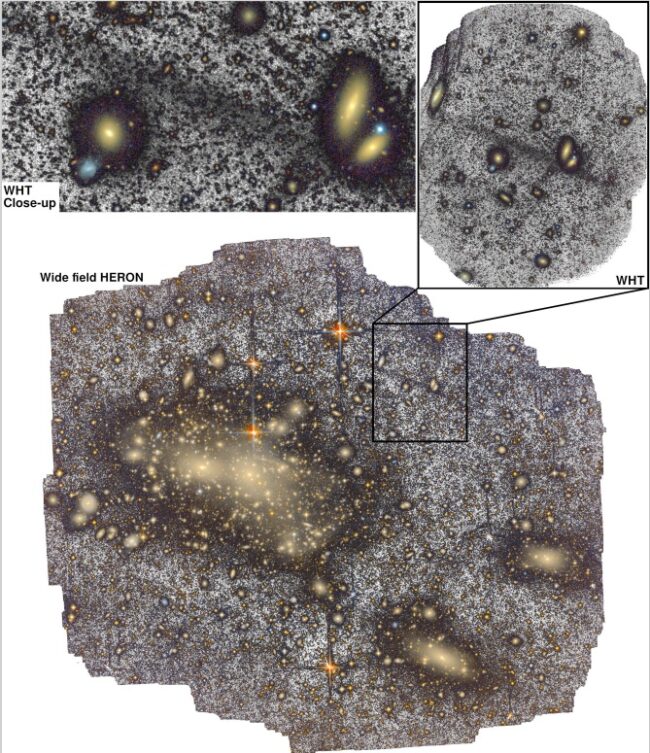Watch a video about the Giant Coma Stream, a giant stream of stars.
A giant stream of stars between galaxies
For the first time, astronomers have spotted a giant stream of stars between galaxies. They named the stream the Giant Coma Stream for where it was found, among the giant Coma galaxy cluster in the direction of the constellation Coma Berenices. A team of astronomers announced their discovery of the stream, which is 10 times as long as the Milky Way galaxy, on November 30, 2023. The discovery was a surprise. Lead researcher Javier Román of the University of Groningen (Netherlands) and the University of La Laguna in Tenerife (Spain) said:
This giant stream crossed our path by coincidence. We were studying halos of stars located around large galaxies.
The team published their findings in the peer-reviewed journal Astronomy & Astrophysics.
The 2024 lunar calendars are here! Best Christmas gifts in the universe! Check ’em out here.
The discovery
One of the remarkable things about the discovery of this super faint stream of stars lying 300 million light-years away is that it was first discovered by astronomer Michael Rich using the relatively small 70-centimeter (27.5-inch) HERON telescope in California. Then, astronomers using the 4.2-meter (165-inch) William Herschel Telescope in the Canary Islands, Spain, were looking at galactic halos when they saw the streak in their data.
The astronomers were surprised to discover the stream, because, as they explained, it’s a fragile structure in a hostile environment. The Coma galaxy cluster is jammed with as many as 10,000 or more members, pushing and pulling on each other. But, even though it was an unexpected finding, astronomers now expect to discover more. As co-author Reynier Peletier of the University of Groningen said:
Meanwhile, we have been able to simulate such huge flows in the computer. We therefore expect to find more of them. For example, if we search with the future 39-meter [128-foot] ELT and when Euclid starts producing data.

How did the giant stream of stars form?
While the Giant Coma Stream looks similar to streams of stars previously discovered in the Milky Way and Andromeda galaxies, those streams were inside galaxies, not between them. As the paper said, the Giant Coma Stream:
… does not appear to be associated with any particular galaxy, appearing as a free-floating feature in the outer regions of Coma.
Analyzing the stream’s features – namely its faintness, mass and color – led researchers to conclude that the stream probably originated from a dwarf galaxy. However, they weren’t able to:
… identify any potential galaxy remnant or core.
The astronomers hope to use future large telescopes to find more streams like the Giant Coma Stream to help them understand how it came to be. And they also hope to make more observations of the Giant Coma Stream to gain insight on dark matter.
An insight to dark matter
Better observations of the Giant Coma Stream might help astronomers in the quest to understand dark matter. As Peletier said:
We would love to observe individual stars in and near the stream and learn more about dark matter.
In fact, the idea of dark matter first arose with astronomer Fritz Zwicky in 1933. At the time, he was studying the giant Coma cluster of galaxies. His observations showed that galaxies in the Coma cluster were moving too quickly if they only contain the matter that we can see.
The astronomers said “one of the imminent and most impactful applications” of studying the Giant Coma Stream would be the possibility of testing the shapes of dark matter halos. These theoretical structures may house galaxies inside of them. In fact, our own Milky Way galaxy may be surrounded by a dark matter halo.
Bottom line: Astronomers have discovered the first giant stream of stars outside a galaxy. It lies among the galaxies in the Coma cluster, and it may shed light on dark matter.
Source: A giant thin stellar stream in the Coma galaxy cluster
Via Dutch Research School for Astronomy (NOVA)